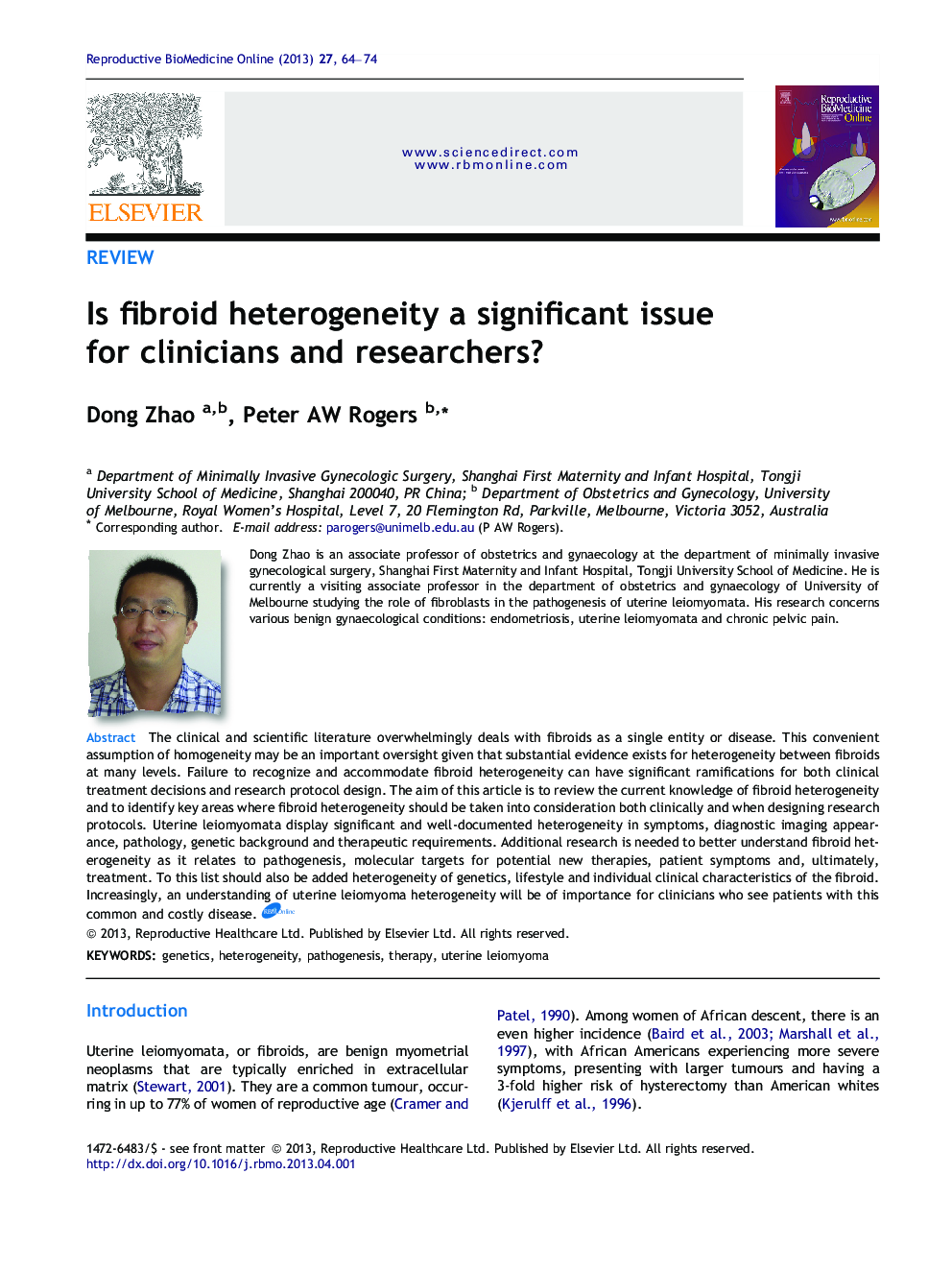| Article ID | Journal | Published Year | Pages | File Type |
|---|---|---|---|---|
| 3970268 | Reproductive BioMedicine Online | 2013 | 11 Pages |
The clinical and scientific literature overwhelmingly deals with fibroids as a single entity or disease. This convenient assumption of homogeneity may be an important oversight given that substantial evidence exists for heterogeneity between fibroids at many levels. Failure to recognize and accommodate fibroid heterogeneity can have significant ramifications for both clinical treatment decisions and research protocol design. The aim of this article is to review the current knowledge of fibroid heterogeneity and to identify key areas where fibroid heterogeneity should be taken into consideration both clinically and when designing research protocols. Uterine leiomyomata display significant and well-documented heterogeneity in symptoms, diagnostic imaging appearance, pathology, genetic background and therapeutic requirements. Additional research is needed to better understand fibroid heterogeneity as it relates to pathogenesis, molecular targets for potential new therapies, patient symptoms and, ultimately, treatment. To this list should also be added heterogeneity of genetics, lifestyle and individual clinical characteristics of the fibroid. Increasingly, an understanding of uterine leiomyoma heterogeneity will be of importance for clinicians who see patients with this common and costly disease.The clinical and scientific literature overwhelmingly deals with fibroids as a single entity or disease. This convenient assumption of homogeneity may be an important oversight given that substantial evidence exists for heterogeneity between fibroids at many levels. Failure to recognize and accommodate fibroid heterogeneity can have significant ramifications for both clinical treatment decisions and research protocol design. The aim of this article is to review current knowledge of fibroid heterogeneity and to identify key areas where fibroid heterogeneity should be taken into consideration both clinically and when designing research protocols. Uterine leiomyomata display significant and well-documented heterogeneity in symptoms, diagnostic imaging appearance, pathology, genetic background and therapeutic requirements. Additional research is needed to better understand fibroid heterogeneity as it relates to pathogenesis, molecular targets for potential new therapies, patient symptoms and, ultimately, treatment. To this list should also be added heterogeneity of genetics, lifestyle, and individual clinical characteristics of the fibroid. Increasingly, an understanding of uterine leiomyoma heterogeneity will be of importance for clinicians who see patients with this common and costly disease.
